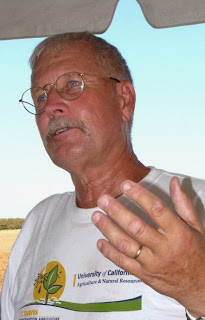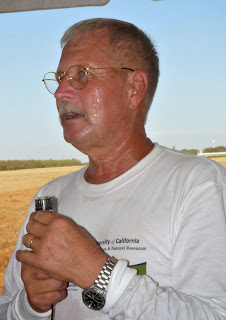GIFT TO UC DAVIS TO SOLVE CA WATER PROBLEMS
–>A Boost for Watershed Science, Agriculture
–>A Boost for Watershed Science, Agriculture
 |
| Twilight Conservation Tillage Attendees listen to speakers |
 |
| Mitchell spoke about CT Research |
 |
| “Soil Improvement ideas are not new.” |
 |
| Mitchell: Soil Organic Matter Holds more Water |
Scientists Improve Calorie Estimation Method
 Starting TODAY, The City of Livingston and The Sweet Potato Council of California brings to you an event for families to celebrate the Sweet Potato Harvest. This year’s event will be held on September 20, 21, 22, 2013 at the Max Foster Sports Complex, 2600 Walnut Avenue Livingston.
Starting TODAY, The City of Livingston and The Sweet Potato Council of California brings to you an event for families to celebrate the Sweet Potato Harvest. This year’s event will be held on September 20, 21, 22, 2013 at the Max Foster Sports Complex, 2600 Walnut Avenue Livingston.
 Fans of fresh figs will have to move fast. Farmers report the fig season is coming to an early end. One Merced County farmer says the season was the earliest she has experienced in 23 years, because of warm spring weather that caused figs to mature faster.
Fans of fresh figs will have to move fast. Farmers report the fig season is coming to an early end. One Merced County farmer says the season was the earliest she has experienced in 23 years, because of warm spring weather that caused figs to mature faster.
One of our first stops was the California-China Office of Trade and Investment in Shanghai, which was opened in April of this year by Governor Brown. It is a valuable resource for California businesses as a venue for meetings, temporary office space, and an opportunity to connect with staff members who are eager to assist California companies interested in doing business in China, which is California’s third largest export market for agricultural products, with over $1.7 billion in shipments in 2012.
 |
| Brown Marmorated Stink Bug (Photo credit: Baldo Villegas, CDFA) |
Brown marmorated stink bug affects many different crops and is a serious residential problem. It moves around easily, so can be expected to spread. It can fly up to a half mile at a time and also travels long distances by hitching rides in vehicles or inside furniture or other articles when they are moved, often during winter months. As a result, most new infestations are found in urban areas.
 |
| (Photo credit: Baldo Villegas, CDFA) |
In addition to the damage caused by the BMSB feeding, the “true bug” can cause disturbing problems for homeowners in the winter. When the weather cools down, bugs migrate in droves to sheltered areas, including inside homes and buildings.